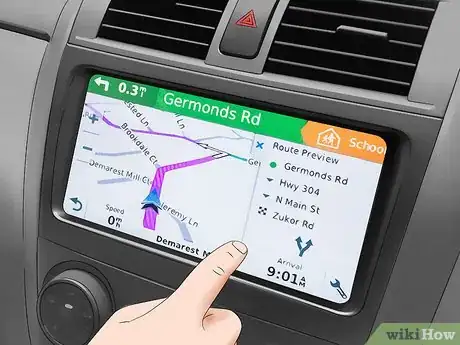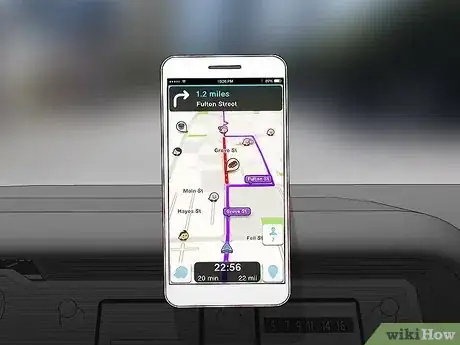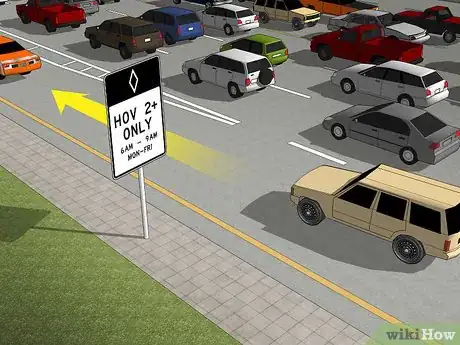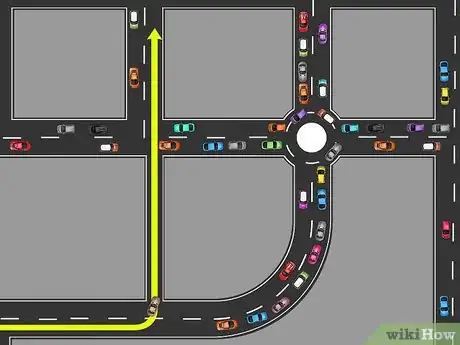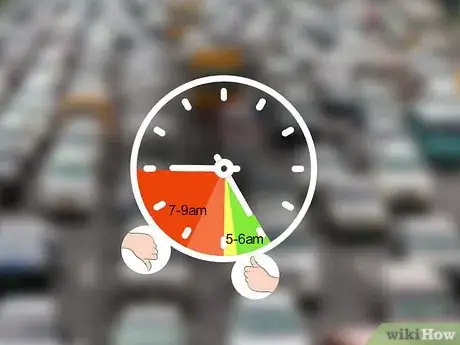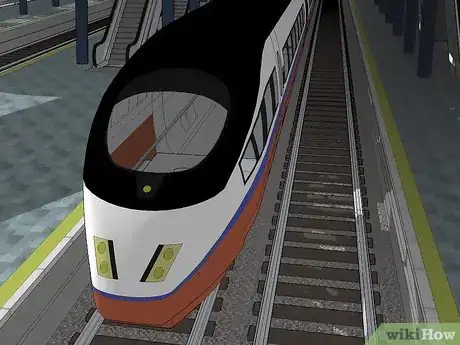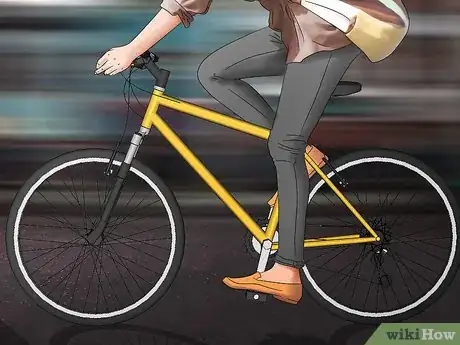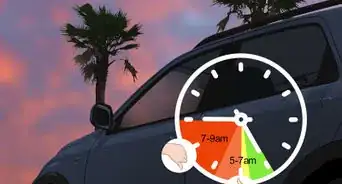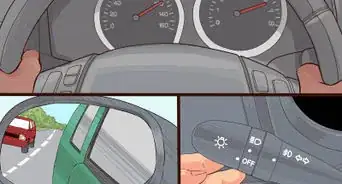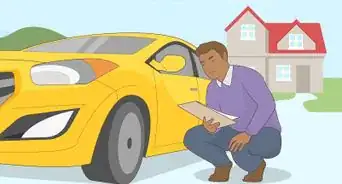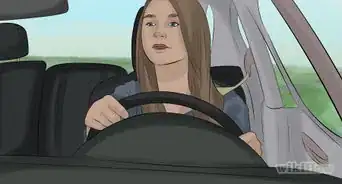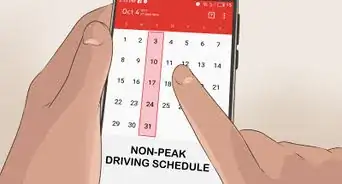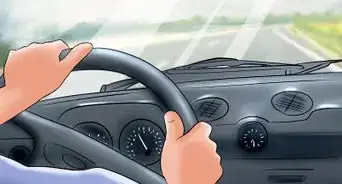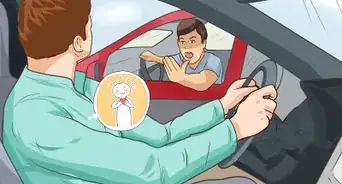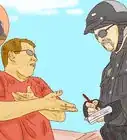This article was co-authored by Simon Miyerov. Simon Miyerov is the President and Driving Instructor for Drive Rite Academy, a driving academy based out of New York City. Simon has over 8 years of driving instruction experience. His mission is to ensure the safety of everyday drivers and continue to make New York a safer and efficient driving environment.
This article has been viewed 207,546 times.
Nothing ruins an otherwise perfect day like getting stuck in a traffic jam. By planning your journey ahead, however, you can avoid most congestion. There are also a number of technological tools that can help you skirt traffic issues, even in real time. You can also consider changing the times you travel at and transportation methods, especially if you live in an area that is constantly prone to traffic jams. With a little planning, you'll reach your destination without raising your blood pressure.
Steps
Planning Alternate Routes
-
1Listen to traffic reports before you begin your journey. Local television news programs often give morning and afternoon traffic reports to help commuters. Some locations also have dedicated traffic radio. Tune into these before you get in the car. If it sounds like traffic is backed up on your normal route, take one of your alternatives.[1]
-
2Put your GPS to work. Many GPS systems have built-in traffic flow monitoring. These can alert you when a route is affected by a traffic jam. Some can even automatically change your route to a clearer one. Check the instructions for your model to see what capabilities it has, and how to set up the traffic monitoring features.[2]Advertisement
-
3Use traffic apps. The navigation tools built into most smartphones have the ability to detect traffic problems, much like dedicated GPS devices. There are also apps like Waze that you can install and use to help avoid traffic jams.[3]
- Traffic apps may have special features like real time camera feeds to view traffic conditions, or social features to help you connect with other drivers and learn about various routes.
- If you just your phone to help avoid traffic jams, be sure not to check it while you are actually driving.
-
4Don’t fear the HOV lane. Cities that have freeways often devote one of the lanes to High Occupancy Vehicles (HOVs), or ones that have at least two people riding in them (including the driver). These almost always have fewer cars, which means less congestion. Give the HOV lane a chance and see if it helps you avoid jams.[4]
-
5Learn several ways to reach your destination. Most destinations in busy locations can be reached by several ways. Before you go, look up several routes, including the fastest, the shortest, and alternatives that may take you down side-streets. You can take one of the alternatives if you expect a traffic jam, saving you time and stress.[5]
- Use maps or apps to research possible routes.
- You can also ask other people which routes they take to avoid traffic congestion.
Changing Your Travel Plans
-
1Avoid rush hour.[6] The early morning and late afternoon hours are the worst traffic times in most locations, because that is when most people are on the road commuting to and from work/school. If at all possible, avoid driving during these times. Leaving just a little bit earlier or later can help you steer clear of tailgating traffic.[7] .
- If you do have to drive during rush hour, try to maintain the flow of traffic by going at a consistent speed.[8]
-
2Ask to change shifts at work if possible. If you work during the day and have to drive, you still might be able to avoid rush hour. Ask your supervisor if you can change shifts so that you come in and leave earlier and later to beat the rush-hour traffic.
- A more involved change is to work from home, but some employers are open to this idea. Even if you can work from home only one day a week, that means a little less time spent waiting in traffic jams.
-
3Make the most of public transportation. There are real benefits to public transportation, including decreased traffic overall. For you as an individual, it can be a solution for avoiding traffic jams. Modes like rail and subways bypass roads altogether. Even bus routes are usually planned to get people where they need to go efficiently. Sit back, relax, and let someone else do the driving! You can even have a nap on the journey if you wish, and unlike an ordinary car driver, buses are permitted to use bus lanes which are far less congested than other lanes reserved for other traffic. [9]
-
4Enjoy the freedom of two feet or wheels. If you only have to travel a fairly short distance, try not to drive at all. If it’s a walkable distance, there’s no need to get stuck behind the wheel. You can also try cycling, especially if there are dedicated cycle lanes in your area. This can be more direct, enjoyable and is healthier than driving.[10]
- Walking and cycling are great choices for your health: you can lose weight, get exercise, and do your bit to help save the environment.
- In some locations, motorcycles and scooters are allowed to drive between lanes of traffic. If this is allowed in your area, this can be another option for escaping a traffic jam.
Expert Q&A
-
QuestionWhat causes traffic jams?
 Simon MiyerovSimon Miyerov is the President and Driving Instructor for Drive Rite Academy, a driving academy based out of New York City. Simon has over 8 years of driving instruction experience. His mission is to ensure the safety of everyday drivers and continue to make New York a safer and efficient driving environment.
Simon MiyerovSimon Miyerov is the President and Driving Instructor for Drive Rite Academy, a driving academy based out of New York City. Simon has over 8 years of driving instruction experience. His mission is to ensure the safety of everyday drivers and continue to make New York a safer and efficient driving environment.
Driving Instructor A lot of traffic is caused by drivers speeding up and slowing down causing a chain reaction of other people slowing down. Try to maintain a consistent speed with the flow of traffic to help avoid a jam.
A lot of traffic is caused by drivers speeding up and slowing down causing a chain reaction of other people slowing down. Try to maintain a consistent speed with the flow of traffic to help avoid a jam. -
QuestionCan we get up early to avoid traffic jams?
 Community AnswerDefinitely.
Community AnswerDefinitely.
References
- ↑ http://thevacationgals.com/tips-to-avoid-traffic-jams-in-los-angeles/
- ↑ http://thevacationgals.com/tips-to-avoid-traffic-jams-in-los-angeles/
- ↑ https://www.kenneymyers.com/blog/10-iphone-apps-to-help-you-avoid-traffic-on-your-commute/
- ↑ http://thevacationgals.com/tips-to-avoid-traffic-jams-in-los-angeles/
- ↑ http://www.vdriveusa.com/resources/how-to-avoid-a-traffic-jam.php
- ↑ Simon Miyerov. Driving Instructor. Expert Interview. 4 December 2019.
- ↑ http://www.vdriveusa.com/resources/how-to-avoid-a-traffic-jam.php
- ↑ Simon Miyerov. Driving Instructor. Expert Interview. 4 December 2019.
- ↑ http://thevacationgals.com/tips-to-avoid-traffic-jams-in-los-angeles/
- ↑ http://thevacationgals.com/tips-to-avoid-traffic-jams-in-los-angeles/
- ↑ Simon Miyerov. Driving Instructor. Expert Interview. 4 December 2019.
- ↑ https://nytimes.com/2016/08/11/upshot/driving-tips-how-you-can-help-limit-traffic-jams.html

